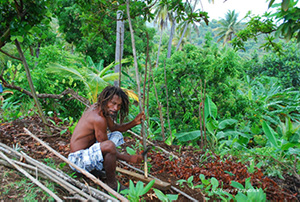Future of Sea Ice: A Journey to Antarctica

Photo by Cassie Matias
Posted October 20, 2024
When considering an Antarctic expedition cruise, images of penguins, seals, and whales come to mind. But for me, the real star was frozen saltwater, known as sea ice, and its unexpected yet critical environmental role. Who would have thought that ice could hold such fascination?
Discovering Ice

Zodiac Cruising Photo: Julie Suman
The first glimpse of the vastness of the 7th Continent overwhelms you with emotion. I remember gazing at the snowy landscape with a mix of joy and nervousness as my husband, and I watched the fleet of Ultramarine zodiacs from Quark Expeditions first launch into the icy Southern Ocean. Never did I feel so small. Any jitters were quickly replaced with awe as we cruised through our first Antarctic stop in Cierva Cove.
It’s a strange feeling when your zodiac bumps along frozen chunks—sea ice forms when the ocean waters freeze. Pack ice, up to 3 to 6 feet thick, floats freely. Thankfully, we skipped cruising over the more immense formations. The smaller sea ice makes a nice thud when you hit it.
Fast ice, another type of sea ice, forms against the coast, building colossal frozen landscapes that help shape the continent. Think of flat frozen sheets jutting out along the continent. Both forms of sea ice differ from icebergs that form on land and break away into the water.
Life on Ice

A Weddell Seal’s Life on Ice Photo: Julie Suman
Weddell seals love sea ice. Just look at the happy face of this adorable creature chilling on a floating hunk of ice. Don’t let this restful scene fool you. I learned from expert naturalists that the frigid platform acts as a place for breeding and rest. Pack ice also provides a floating garden teaming with plankton, algae, and copepods. Shrimp-like krill—a seal’s favorite meal, graze on the sea ice.
We occasionally spotted krill swarming near the ice. Whales and penguins also eat krill as a major part of their diet. In Antarctica, Gentoo, Chinstrap, and Adelie penguin species are diving for this food. The hooks and barbs in their beaks capture and hold onto krill and fish. Penguins will also munch on snow and ice to consume fresh water.
Continental Growth

Chinstrap Penguin Photo: Julie Suman
As the seasons change, the extent of sea ice increases and decreases. The size of a continent can almost double in the winter with the formation of fast ice. The growth patterns impact animal habitats, microorganisms, and environmental aspects.
Sea ice reflects solar radiation and insulates the upper regions of the ocean. Throughout our journey, we witnessed the snow falling gently on the ice, and watched snowflakes float by felt like a giant snow globe. The snowy layer, however, functions as an ice blanket, impacting sea ice freezing and melting cycles.
Ice Impact
Daily educational presentations onboard the Ultramarine were informative and entertaining. During the session on sea ice, we learned how it plays an important role in the turnover of the world’s oceans. When ocean water freezes, salt pushes into the layer below. The salt concentration increases the water density, and it sinks, bringing oxygen and nutrients with it. The salty water continues to move to the bottom, allowing warmer water to flow into that space, creating a cycle that moves ocean currents.
Antarctic winds can blow fiercely. The beating of the wind was evident in the tattered 7th Continent flag flown throughout the Ultramarine’s journey. Sea ice buffets the wind, which impacts the degree of mixing at the ocean surface.
Helicopter View

Charcot Bay via Helicopter Photo: Julie Suman
The Ultramarine’s two twin-engine helicopters are a major feature of an Antarctica itinerary. It’s one of the reasons my husband and I chose to sail with Quark Expeditions.
On our last day near the Antarctic peninsula, we woke to a gloriously sunny day with crystal blue skies in Charcot Bay. The weather conditions favored helicopter flights, and today was the day we flew over the continent.
The bay was littered with floating ice of all shapes and sizes. I could see the turquoise shadows underneath the snow-capped sea ice, which betrayed the sheer size of some pieces. It was easy to see how the fast ice had broken to form ice floes. The experience truly illustrated the majesty of ice.
Future of Sea Ice
One cannot discuss the cycle of Antarctic ice without considering the impact of climate change. Temperatures are rising, and ice is melting. Scientists actively study the implications and report concerning consequences on local habitats and the global scale.
We asked one of the Ultramine crew members, who has worked for decades in Antarctica, what the most significant change has been. His first response was, “It’s getting greener.” I was also surprised to see mosses and other greenery when we were on the continent.
Antarctica isn’t all snow and ice. The continent’s beauty is multi-faceted. Regardless of your environmental mindset, the journey here teaches you to slow down and appreciate nature’s magic.

Photo by Martin Wettstein
Click here to find discounted accommodations in Buenos Aries — a jumping off point for visiting Antarctica.
Join the community!

Join our community to receive special updates (we keep your private info locked.)




